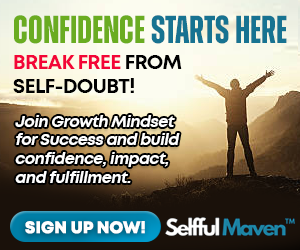What if your beliefs about intelligence and abilities are the only thing standing between you and your full potential? That’s where the battle between a growth mindset and a fixed mindset begins. Coined by renowned psychologist Dr. Carol Dweck, these concepts are much more than buzzwords. They define how we approach challenges, setbacks, and opportunities.
This blog post explores the differences between a growth mindset and a fixed mindset, their impact on personal growth, and actionable strategies to adopt a growth mindset. By the end, you’ll not only understand these powerful mindsets but also be equipped with tools to reshape how you approach life’s challenges.
What Is a Growth Mindset?
A growth mindset is the belief that abilities, intelligence, and talent can be developed through hard work, dedication, and persistence. Rather than seeing these traits as fixed, a growth mindset emphasizes that they are flexible and capable of improvement.
Dr. Dweck explains that a growth mindset creates a “love of learning and resilience essential for great accomplishment.” For example, rather than avoiding challenges, someone with a growth mindset sees them as opportunities for growth. Failure isn’t the end; it’s part of the process.
Core Beliefs of a Growth Mindset:
- Intelligence and skills can be developed.
- Challenges are opportunities for growth.
- Hard work and persistence lead to improvement.
- Learning from feedback is essential.
Adopting a growth mindset has been shown to fuel motivation, drive productivity, and foster resilience in all aspects of life, from business to education. Virtually all great achievers—from elite athletes to top-performing executives—exhibit these qualities.
What Is a Fixed Mindset?
On the flip side, a fixed mindset assumes that intelligence and abilities are innate and unchangeable. People with a fixed mindset believe they are either “good” or “bad” at something, and effort doesn’t make much of a difference.
For instance, if someone struggles with public speaking, a fixed mindset might lead them to say, “I’m just not good at speaking in front of people,” rather than exploring how they can improve. These beliefs stunt growth and create a fear of failure that often prevents attempting new things.
Core Beliefs of a Fixed Mindset:
- Intelligence and talent are static and unchangeable.
- Failure is a signal of lack of ability.
- Challenges are to be avoided to prevent mistakes.
- Criticism and feedback are seen as personal attacks.
Understanding the fixed mindset definition is essential to recognize when these beliefs creep into your thought patterns. Left unchecked, they can hold you back from realizing your true potential.
Benefits of Adopting a Growth Mindset
Why should you cultivate a growth mindset? The benefits go far beyond improving work performance. Here’s how it can enhance your life:
1. Enhanced Learning and Skill Development
With a growth mindset, you’re continually learning and evolving. Every challenge is an opportunity to develop new skills, which can lead to expertise in areas you might have once thought impossible.
2. Greater Resilience
Setbacks and failures are inevitable, but with a growth mindset, they don’t define you. Instead, they motivate you to adapt, rethink your strategy, and try again. Resilience becomes your superpower.
3. Motivation to Persevere
When you believe effort directly influences improvement, you’re more likely to stay motivated even when results aren’t immediate. A growth mindset helps you see the bigger picture.
4. Improved Relationships
Having a growth mindset encourages constructive feedback and reduces defensiveness. This not only improves personal relationships but also fosters collaboration in teams and professional settings.
5. Open Doors to Opportunity
People with a growth mindset are more likely to say “yes” to opportunities outside their comfort zone, leading to personal and professional growth.
Strategies to Develop a Growth Mindset
Shifting from a fixed mindset to a growth mindset takes intentional effort, but it’s absolutely possible. Here are some practical steps to get started:
1. Change Your Inner Dialogue
Pay attention to your self-talk. Replace fixed-mindset statements like “I’m not good at this” with growth-mindset alternatives like “I’m not good at this yet.” Adding that small word can reframe your perspective.
2. View Challenges as Opportunities
Take a moment to reframe obstacles as learning experiences. For example, instead of dreading public speaking, consider it a chance to refine your skills and gain confidence.
3. Celebrate Effort Over Results
Focus on the process, not the outcome. Celebrate hard work, persistence, and creativity, regardless of whether the result was flawless.
4. Learn from Criticism and Feedback
Feedback is a gift. Rather than taking criticism personally, analyze it objectively. Ask yourself, “How can this help me grow?”
5. Encourage Productive Failure
Mistakes are often the best teachers. From athletes to entrepreneurs, the most successful individuals have learned to see failure as a step toward success. Adopt this mindset in your own endeavors.
6. Surround Yourself with Growth-Minded People
Attitude is contagious. Actively seek out mentors, friends, and colleagues who inspire you to grow and challenge yourself.
7. Take a Growth Mindset Course
If you want structured guidance, enroll in a course like Selfful Maven’s Growth Mindset for Success: The Key to Confidence, Impact & Fulfillment. Expert instruction can provide you with tools to fully integrate a growth mindset into your life.
Real-Life Examples of a Growth Mindset in Action
Example 1: Thomas Edison
Edison famously said, “I have not failed. I’ve just found 10,000 ways that won’t work.” His persistence and growth mindset turned failures into learning opportunities, ultimately leading to the invention of the light bulb.
Example 2: Oprah Winfrey
Despite early career setbacks—including being told she was unfit for television—Oprah’s growth mindset propelled her toward becoming one of the most successful media moguls in history.
Example 3: J.K. Rowling
Before the success of Harry Potter, J.K. Rowling faced rejection from multiple publishers. Her belief in growth through effort kept her going, turning her dream into a global phenomenon.
Unlock a Better You with a Growth Mindset
The difference between a growth mindset and a fixed mindset can be the difference between thriving and staying stagnant. By adopting a growth mindset, you unlock new possibilities, build resilience, and pave the way for success in all areas of life.
If you’re ready to take the next step, we highly recommend my online course, Growth Mindset for Success: The Key to Confidence, Impact & Fulfillment. Designed for professionals and individuals alike, this program helps you understand your mindset and equips you with actionable strategies to transform your thinking.
Start your growth mindset transformation today. Sign up for access to tools that will reshape your approach to challenges, opportunities, and success.






